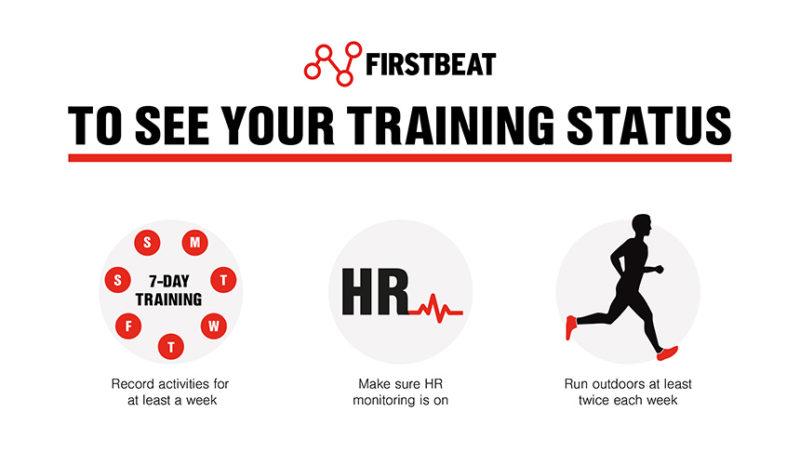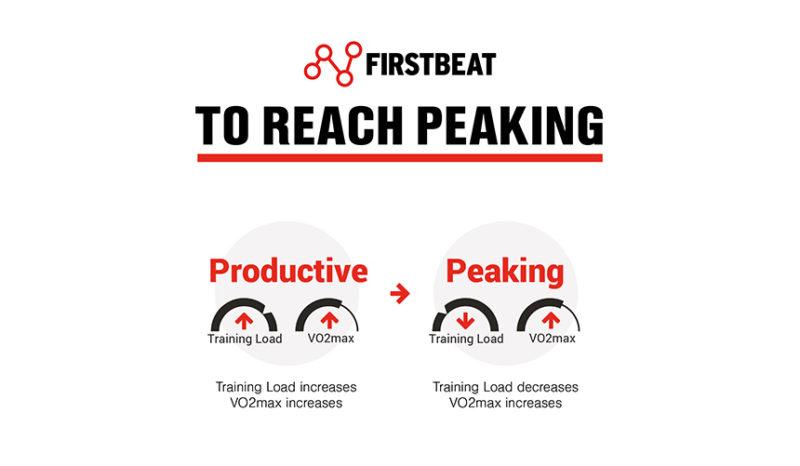
Train Smart with Firstbeat. Do you want to get most out of your training? In this blog series we help you to understand the physiological background of Firstbeat features and how to use them to improve your fitness and achieve your performance goals.
You can’t have the same fitness all year round, at least not if you want to be in top form and get the most out of your performance. It is quite short time that your body can perform at its highest level. So, you need to plan and schedule your training, especially if you have a race or challenge coming up where you want to do your best.
It is essential to monitor your training and make changes when needed. Rest more if you are in a danger of overreaching, push harder if you are detraining and your fitness level is decreasing. However, sometimes it’s hard to know what’s really going on in your body.
Are you stuck in a rut because your body is accustomed to the current level? Are you eager to be in top performance mode for race day?
Then peaking is the key. It is that special – brief – time when you are able to take your foot off the gas, but your Fitness Level, that is your VO2max, continues to improve. It doesn’t last long and requires some smart work to achieve.
Luckily, Firstbeat Training Status helps you out. By analyzing your long-term training and taking into account changes in your fitness level it helps you optimize your workout.

Training Status Offers You the Big Picture
Training Status is based on three key elements: changes in your VO2max Fitness Level, your current Training Load as well as changes with respect to your long-term Training Load.
To be able to measure your VO2max, your heart rate and movement speed (GPS) is needed. And to be able to monitor changes in your aerobic fitness, your VO2max value should be updated often. This means that you should run outside (at least 15 minutes) or cycle with power meter at least twice within each 2-week span, otherwise your Training Status can’t keep up with your VO2max trend. The more often your VO2max is updated, the more reliable your Training Status calculations become.
Your Training Status can’t be determined before you have exercised regularly for at least one week with the device. And to be able to continuously track your Training Load, you need to exercise at least once every week with your heart rate monitor enabled.
If your data – VO2max or Training Load – gets outdated, no reliable Training Status can be shown. So keep on running!

6 Tips to Peak at Right Time!
Peaking at the right time isn’t easy. Everybody and every body is unique.
A method that works for your buddy won’t necessarily work for you. And even an approach that worked for you few years back doesn’t necessarily work for you anymore.
Here are few tips that you can follow and maximize your performance:
1. Determine your goal. It’s impossible to peak every week. Decide the goals you want to achieve and focus on them.
2. Make a training plan – but don’t stick to it. Training is affected by many things and not all of them are in your hands. Illness, injuries, work stress, personal relationships, and weather… all affect your life and your performance. Be ready to adapt your training program according to circumstances.
3. Monitor your body. Similar workouts can produce different results depending on circumstances, so keep an eye on your Aerobic Training Effect, which reveals the physiological impact of a single exercise, and Training Load, which reports how hard you have been working over the past 7 days. You benefit from the insight of Training Status by including some outdoor runs in your weekly training program, enough to keep your VO2max up to date.
4. Train productively. The process of peaking starts months before the race day by building a proper endurance base and boosting your VO2max. To train productively, you need enough hard and intense exercises but also low-intensity training as well as rest and recovery. Otherwise you are in danger of overtraining phenomenon and your Fitness Level will decrease. When your Training Status is productive, your VO2max is improving and your Training Load is high.
5. Taper before your goal. After scoring a productive Training Status, you can achieve peaking by significantly decreasing your Training Load with light exercise. If your training has been effective, your VO2max trend continues to increase although your Training Load diminishes. This is called tapering, and it lets your body to recover and maximize your performance. However, you don’t need to stop exercising totally. If you make a dramatic change to your activity level your body might feel flat and sluggish on a race day. Some short but intense activities might be just right to turn on your body.
6. Be patient. You might not master peaking the first time, but don’t fret. Every time you complete a training cycle and try to reach the peak, you learn more about how your body responds to different stimuli. Next time you will do better!
If you liked this article, you should subscribe to our mailing list
You might also be interested in

Intensity Is Your Fitness Friend
You may have heard that your fitness level is determined by your genetics. This is true. Luckily, that’s not the whole story. Experts say that about half of the variation in physical fitness between individuals is heritable, meaning it comes to you through your parents.

VO2max the Ultimate Resource for Conquering Your Health and Performance Goals
This technology is new to many, but the groundwork for this revolutionary step has been carefully developed and curated by Firstbeat for well over a decade.

The Bigger the Training Effect, the Better?
You need to push your limits to improve your VO2max and get Aerobic Training Effect of 3.0-5.0. However, exercise can be very useful, although your TE value isn’t that high. The variation is the key to success.
